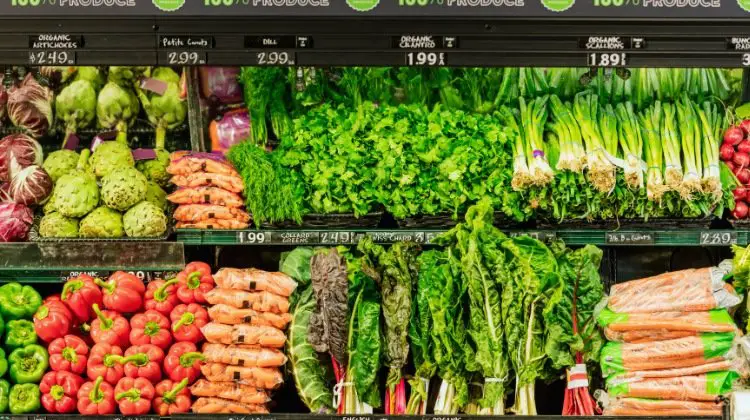Are you finding it hard to keep up with rising grocery costs? You’re not alone, and you might have thought about EBT card eligibility. The Supplemental Nutrition Assistance Program (SNAP) uses Electronic Benefit Transfer (EBT) cards to distribute food assistance.
The EBT card functions like a debit card. It is loaded with funds each month, helping families purchase necessary groceries, but figuring out EBT card eligibility can be confusing.
Let’s break down who qualifies and how this program could provide much-needed assistance.
Table of Contents:
- Understanding SNAP and How It Works
- EBT Card Eligibility Requirements
- Specific Groups and Situations
- How Benefits Get Calculated
- Applying for SNAP – The Steps
- What Happens Once Approved
- Conclusion
Understanding SNAP and How It Works
The Supplemental Nutrition Assistance Program (SNAP), once called food stamps, is a federal program. This nutrition assistance program helps many by supplementing their food budgets.
The goal is straightforward which is to help ensure access to a healthy diet. SNAP benefits are added to an Electronic Benefit Transfer (EBT) card.
This card works similarly to a debit card at participating grocery stores. It’s a form of assistance to help you afford nutritious food.
Who’s This For?
SNAP provides benefits to low-income individuals and families. Eligibility is usually determined by your household’s income, the number of people living with you, and sometimes, your assets.
Income limits often align with the federal poverty guidelines. The amount of SNAP benefits a household receives depends on these factors, and the number of people in the household.
EBT Card Eligibility Requirements
Across different states, there are common factors. These guidelines take into account the household size.
The total number of people residing together is considered. The financial aspect involves net and gross income, often with different levels, such as a limit near 130% of the poverty line.
Sometimes, assets like substantial savings are included. There are specific exemptions for things like homes and vehicles. One source indicated a household could own a home and still receive benefits, with some conditions if selling the car would generate significant cash.
Income Limits, Step-by-Step
Income limits can be confusing, so here’s a simplified explanation. Gross income is your household’s earnings before deductions, like your total paycheck amount.
Net income is the money available after certain allowed expenses are subtracted. Many states primarily focus on net income.
Both these figures are usually reviewed in a standard case. Let’s examine how this works and what the limits are in various states.
Take a look at this table:
| State | Household Size | Gross Monthly Income Limit | Where to Find More Information |
|---|---|---|---|
| Minnesota | 1 | $2,510 | Minnesota Department of Human Services |
| Minnesota | 2 | $3,407 | Minnesota Department of Human Services |
| Minnesota | 3 | $4,303 | Minnesota Department of Human Services |
| Minnesota | 4 | $5,200 | Minnesota Department of Human Services |
| Minnesota | 5 | $6,097 | Minnesota Department of Human Services |
| New York | 1 | $1,632 | New York Office of Temporary and Disability Assistance |
| New York | 2 | $2,215 | New York Office of Temporary and Disability Assistance |
| New York | 3 | $2,798 | New York Office of Temporary and Disability Assistance |
| New York | 4 | $3,380 | New York Office of Temporary and Disability Assistance |
| New York | 5 | $3,963 | New York Office of Temporary and Disability Assistance |
| 48 Contiguous States and D.C. | 1 | $1,632 | USDA Food and Nutrition Service |
| 48 Contiguous States and D.C. | 2 | $2,215 | USDA Food and Nutrition Service |
| 48 Contiguous States and D.C. | 3 | $2,798 | USDA Food and Nutrition Service |
| 48 Contiguous States and D.C. | 4 | $3,380 | USDA Food and Nutrition Service |
| 48 Contiguous States and D.C. | 5 | $3,963 | USDA Food and Nutrition Service |
Some states may have different numbers. However, the general principle remains consistent.
Larger households typically receive more substantial support, which is logical.
Deductions: What Can Be Subtracted?
It’s important to understand that not all income counts against your eligibility. SNAP allows for certain deductions.
There’s usually a standard deduction for typical expenses. An earnings deduction might also be available, acknowledging that employment can bring its own costs, such as commuting or buying work uniforms.
Other deductions may include child care expenses or medical costs for those with specific health conditions. It is beneficial to learn your situation. The formula ‘net income = gross income – allowable deductions’ is generally followed.
Specific Groups and Situations
Some individuals have different methods for determining EBT card eligibility. There’s the “categorically eligible” status, often applicable to those receiving other assistance, like Temporary Assistance for Needy Families.
Households with elderly members (over 60) or individuals with disabilities may have different income calculation rules. This might alter certain limits.
Sometimes, non-citizens who meet specific residency requirements or those receiving certain disability benefits are eligible. For those wondering about student eligibility, the USDA website clarifies this.
Generally, students aged 18-49 enrolled at least half-time in college are ineligible unless they meet certain specific exemptions.
Work Requirements – Important to Know
Adults, unless they are in a special category like caregivers for children or those with documented disabilities, might have “work requirements.” Usually, this involves registering for job search programs.
Some states may require proof of active participation in job placement or training for a minimum duration. These requirements can change during emergencies.
You must meet the work requirements if you are an Able Bodied Adult without Dependents (ABAWD). This means you need to be working a minimum of 20 hours a week, or participating in a qualifying work or training program, or a combination of work.
How Benefits Get Calculated
Benefit calculation is closely tied to eligibility. Once SNAP determines that someone is eligible for food assistance, the amount is determined on a case-by-case basis.
The Thrifty Food Plan sets maximum benefit amounts based on what should, theoretically, cover the cost of nutritious food. This would allow a person to purchase enough nutritious items for their household size.
Those receiving assistance contribute a portion of their net income. The exact amount depends on individual circumstances.
Maximum Allotments and How to Get It
A common method involves subtracting about 30% of a person’s adjusted (net) resources from the Thrifty Food Plan’s maximum amounts. For example, a family with no net income could potentially receive the full allotment, according to the current guidelines.
For a household with, say, $700 remaining after deductions, the ‘30% contribution rule’ would slightly lower the aid from the maximum.
Applying for SNAP – The Steps
Applications are typically submitted in your state of residence, although the core concepts are similar across locations. People usually complete official request forms.
Many social service agencies provide online access to their materials. Don’t be misled if the terminology used locally is different.
Forms are often available online, such as Georgia’s Form 297 Application. These forms guide you through questions used to assess EBT card eligibility in your state.
What Do You Need for Applying
Documents proving your identity are often required. Proof can include valid IDs.
Documents from any other assistance programs you’re already using are also acceptable. Proof of residency is also necessary, along with financial information, such as pay stubs, income from social security, child support payments, or documentation of non-exempt assets.
What Happens Once Approved
Once approved, individuals receive a notice detailing the duration of their support period. The physical EBT cards typically arrive soon after.
Benefit allotments are usually deposited monthly, depending on regional schedules. Individuals can use these funds for eligible purchases at authorized retailers as soon as they are loaded.
Using the EBT Card and Important Details
The EBT card generally functions like any other payment card at grocery stores. You swipe the card, perhaps enter a PIN, at checkout at food stores or authorized online retailers that accept benefit purchases.
However, cash withdrawals are not permitted. The card is exclusively for purchasing specific food items, such as meat, produce, and bread, among other approved groceries.
Conclusion
Feeling stressed by monthly expenses, particularly the cost of nutritious food, is a common struggle. Understanding the details of EBT card eligibility is essential.
Knowing that navigating the system takes effort is a significant first step. Explore your options for EBT card eligibility in your state, seek advice from knowledgeable sources, and complete the necessary forms to discover the available support and make your situation more manageable with government assistance programs.








Reader Interactions